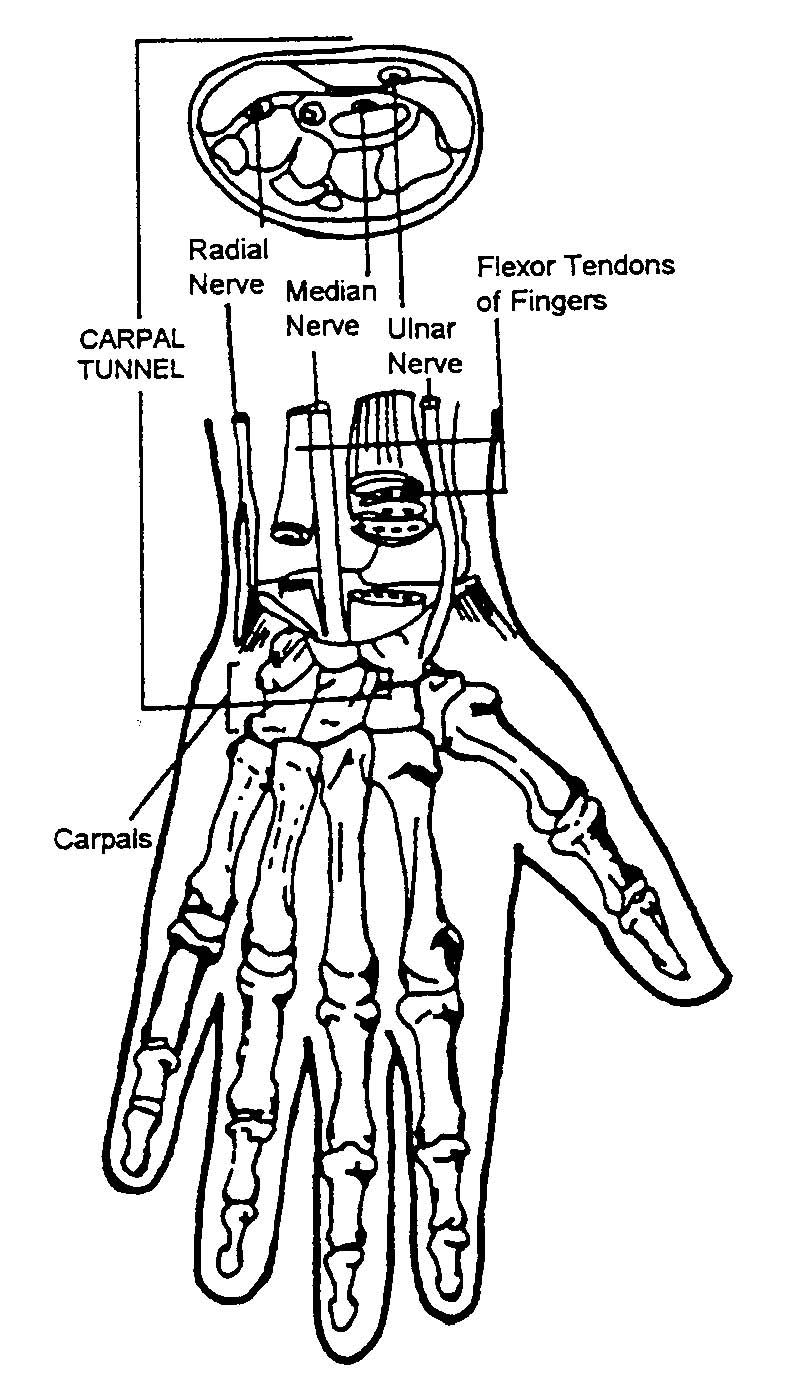The Musculoskeletal System
Lesson 1: Disease and Disorders of the Musculoskeletal System
Section III: Specific Musculoskeletal Diseases
1-16
1-16. CARPAL TUNNEL SYNDROME
This musculoskeletal condition is the most common of the trapped nerve syndromes. The median nerve at the wrist is compressed within the carpal tunnel. The median nerve, tendons, and blood vessels pass through the carpal tunnel at the wrist on the way to the fingers and thumb. The compression causes sensory and motor changes in the hand. The general population in- the 40 to 50 year age group is most likely to have this syndrome, and five times as many women have the condition as men. Carpal tunnel syndrome can develop during pregnancy. For those who use their hands strenuously (sustained grasping, twisting, or flexing the hands done by assembly line workers, for example), the disorder worsens.
a. Signs/Symptoms of Carpal Tunnel Syndrome. Symptoms are often worse at night and may be relieved if the patient shakes his hands vigorously or dangles his hands at his sides. Included are the following:
(1) Pain in the hands.
(2) Weakness in the hands.
(3) Paresthesia (abnormal sensation such as burning, tingling, numbness) in the hands.
(4) Eventually, pain may spread to the forearm and even the shoulders.
b. Treatment. Begin conservative treatment which is to splint the wrist in the neutral position at night. Try this for one to two weeks. If this treatment is unsuccessful, refer the patient to orthopedics.
Figure 1-2. Carpal tunnel syndrome.


